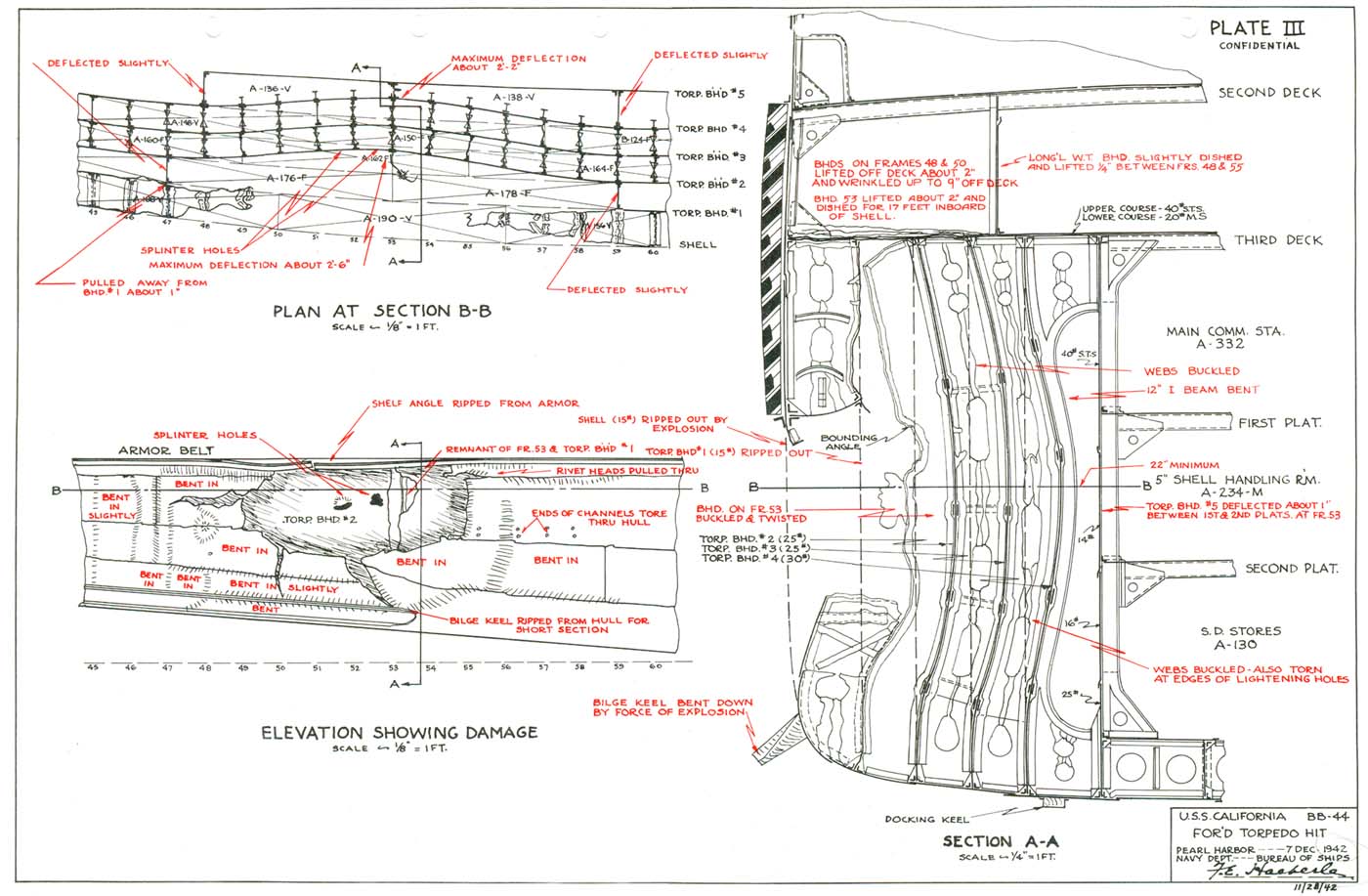1935–1941: Fast battleship[edit]
On 1 June 1935, the
Kongō was dry-docked at Yokosuka Naval Arsenal in preparation for upgrades that would enable her to escort Japan's growing fleet of
aircraft carriers. Her stern was lengthened by 26 feet (7.9 m) to improve her
fineness ratio and her 16 older boilers were removed and then replaced with 11 oil-fired Kampon Boilers and newer geared turbines.
[8] In addition, her bridge was completely reconstructed according to Japan's
pagoda mast style of forward superstructure,
[13] and
catapults were added to support three
Nakajima E8N or
Kawanishi E7K reconnaissance and spotter floatplanes.
[4]
The
Kongō 's armor was also extensively upgraded. Her main belt was strengthened to a uniform thickness of eight inches (up from varying thicknesses of six to eight inches), and also diagonal bulkheads of depths ranging from 5 to 8 inches (127 to 203 mm) were added to reinforce the main armored belt.
[22] The turret armor was strengthened to 10 inches (254 mm), while 4 inches (102 mm) were added to portions of the deck armor.
[22] The
Kongō 's ammunition magazine protection was also strengthened to 4.0 inches (10 cm).
[8] This reconstruction was finished on 8 January 1937.
[1] Capable of greater than 30 knots (56 km/h), despite the significant increase in her hull displacement, the
Kongō was now reclassified as a fast battleship.
[13]
In February 1937, the
Kongō was assigned to the
Sasebo Naval District, and in December she was placed under the command of
Takeo Kurita in the Third Battleship Division. In April 1938, two float planes from the
Kongō bombed the Chinese town of
Foochow during the
Second Sino-Japanese War.
[7] Throughout 1938 and 1939, the
Kongō steamed off the Chinese coast in support of Japanese Army operations during the war. In November 1939, Captain
Raizo Tanaka assumed command of the
Kongō. From November 1940 to April 1941, additional armor was added to the
Kongō 's armament barbettes and
ammunitiontubes, while ventilation and firefighting equipment was also improved. In August 1941, she was assigned to the Third Battleship Division under the command of Vice Admiral
Gunichi Mikawa alongside her fully modified sister warships the
Hiei,
Kirishimaand the
Haruna.
[7]






